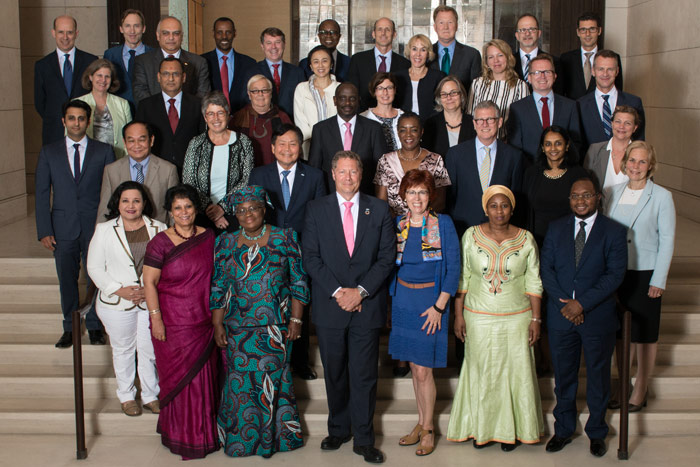07a Country Programmes strategic issues Annex F pdf
Re port to the Board
Annex F: Country Summary Sheets
Anne x F: Country Summary Sheets
1.1 The summary sheets are intended to provide a high -level systematic
snapshot of a country?s performance across a number of key thematic areas
(e.g. coverage, supply chain, data quality) . The y provide additional context
and country -specific overviews and highlight main challenges to inform PPC
and Board discussions.
1.2 Each key thematic area is assessed through a ? tra ffic light?. For the traffic
light assessment, a standardised approach has been applied t o assess
countries? p erformance using agreed -upon quantitative and qual itative
criteria. For example, to measure a country?s performance related to equity ,
the country ?s DTP3 coverage differences in wealth, ma ternal education, and
geography are used as standardised proxies to understand the main drivers
of inequities within the country. This quantitative assessment has then been
complemented with a qualitative assessmen t by the country team, building
on broader assessments and work in this area ( e.g. assessing inequities
across marginali sed groups, urban slums, etc. ).
1.3 Wherever possible and to ensure consistency, the Secretariat has used
indicators and data sources that align with the Alliance?s strategic goal
indic ators and existing, agreed -upon performance measurements (e.g.
grant performance framework target achievement, financial reporting
compliance) . Data for these indicators have been retrieved from various
routine source s, including W HO/UNICEF estimates , DHS/MICs surveys,
EVMAs, and other standardised analyses conducted by Secretariat staff.
1.4 As most thematic areas consider performance across several indicators, to
obtain the ev entual traffic light assessment , each indicator has been given
equal weight , and been validated through the qualitative assessment (where
applicable) .
1.5 In addition to provid ing a traffic light assessment for each key thematic area ,
a trend arrow is included to understand if performance in that area is
improving, declining, or stagnating . Where possible, trends are measure d
through quantitative criteria and data ( e.g. coverage) , but some areas rely
on a more qualitative assessment . For example, in a situation where health
workforce shortages are particularly compelling, this could be marked as
red. However, in view of recent efforts towards developing a health
workforce strategy, the trend may show that we are optimistic that this
situation is on a more positive trajectory.
1.6 Going forward , the Secretariat is considering refinements to the
methodology used for the development of the cross portfolio overview and
country summary sheets (e.g. additional metrics to be considered) . Based
on PPC and Board feedback, the Secretariat is evaluating ho w to provide
country specific information and a cross portfolio overview for all remaining
PEF countries , as well as a higher level summary of progress in remaining
countries.

